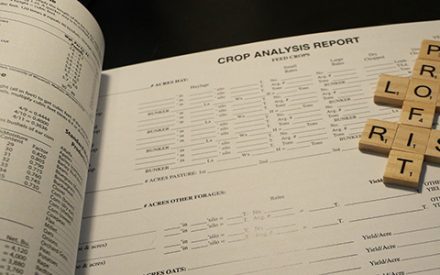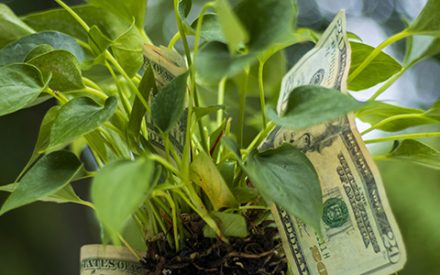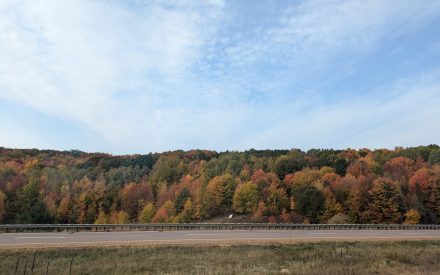Video Summary
Dr. Francisco Arriaga, professor and Extension specialist, discusses the environmental and agronomic implications of dairy manure application in Wisconsin cropping systems. This presentation explores how manure affects soil hydrology, phosphorus runoff, and organic matter levels.
Using rainfall simulation data, Dr. Arriaga compares manure application methods and the role of cover crops in reducing nutrient losses. He also highlights the positive contributions of dairy manure to soil carbon and fertility, offering practical recommendations for sustainable manure management.
Resources
Transcript
0:05
So thank you.
0:06
Thank you everyone for joining us this afternoon for the Badger Crop Connect.
0:11
Just without further ado, we’ll just jump right on it.
0:15
So I’m mainly going to be talking to you about the manure.
0:19
Just to keep with the topic of the day here.
0:22
I want to highlight the significance or importance of of dairy and why we have this decision.
0:26
The state, which is also an opportunity, but it is a tremendous economic engine for the state, the dairy businesses.
0:36
So as you can see there, the numbers 15.2 billion 2022 estimates almost 50,000 jobs and that’s just some direct dairy farm income on farm income.
0:51
But then you add cheese production, which accounts for 90% of the milk production in the state goes into cheese.
0:57
That adds additional value of 37 billion to the state economy per year and more jobs.
1:05
However, the number of dairy farms has actually decreased.
1:08
I think we’ve all seen this in the news.
1:10
The number of farms have been decreasing in the state, but the total milk production has increased.
1:15
So that that shows I guess perhaps some efficiencies in the system.
1:19
One estimate I found was from 2017 to 2022 or 2023, there was a 6% increase in in milk production even though farm number of farms went down.
1:30
So with all this milk production and all this activity obviously comes what comes out of the other end of the cows.
1:40
And we have about 1.3 million cows in the state.
1:43
So if you look at about how much manure a cow produces a day and kind of try to figure out how much manure you might have per day, gallons of manure, you can see that is a significant amount giving percentage similar, similar numbers too.
2:00
So there’s certain considerations is a big thing we have to to to handle like Kevin, Kevin repeated there, you know, with with great loads of manure comes great responsibility as far as we manage this.
2:14
So if we look at that manure and try to think about the farm level, you know what, what does that does that mean?
2:20
So there is a really cool database out of the University of Minnesota called the manure DB.
2:27
And so there’s all kinds of information in there.
2:29
The link, it’s at the bottom of the slide as you can see there.
2:33
But looking at data for Wisconsin only for the last four years, not including 2025, the average reported officers content was about 7 lbs. per 1000 gallons P2O5.
2:47
So if you’re doing an application of 10,000 gallons per acre, which you might be a little moderate, I guess if you will, compared to some of the rates that I’ve heard people apply.
2:56
But let’s let’s use 10,000 because it makes easier math, I suppose.
3:00
Good for my brain.
3:02
That will be about 70 lbs of P2O5 per acre that you would be applying with that manure application.
3:09
So to put it in context, I, I put there on the second bullet.
3:13
What’s the current corn grain production recommendation?
3:17
Nutrient recommendations.
3:20
And it’s for a soil that ranks optimum level and you’re looking like say a yield goal of about 200 bushels per acre.
3:26
It’s about 70 lbs of P2O5, so it kind of matches, right.
3:31
It’s you’re putting about the same amount that you need.
3:33
But couple of things to keep in mind is that because the liquid manure has a high moisture content it’s going to have and you’re applying it all at once, typically in the fall, it has a tendency to move readily under some conditions.
3:46
The other thing is that often we also apply phosphorus in other, in other forms additional fertilizer such as you know starter and all that too.
3:53
So typical applications are greater than that.
3:56
And again, keep in mind that I’m using a 10,000 gallon per acre.
3:59
So if you’re applying more, obviously we’re going to be exceeding that recommendation at the optimum level.
4:07
And with with this it comes water quality issues.
4:10
So phosphorus in surface water creates a, it can, it can lead to algae blooms and epoxy in the in the water, it can lead to fish kills it, it, it reduces the value of recreationally for those water bodies, which is another important economic engine for a lot of smaller towns in the state.
4:30
In Wisconsin, by far the total P, it’s one of the most it’s causes of impairment in the state.
4:37
I think it’s about 50% of streams that are impaired, it’s because of total phosphorus.
4:43
Lakes it’s a little bit less, but close to 40%.
4:46
So it is a significant problem.
4:48
Is agriculture the only source?
4:49
No, but
4:51
It’s a significant source if you will do this phosphorus loading and going beyond the state, there’s also impacts looking at the Gulf of Mexico and looking at fluxes of phosphorus from from the Midwest.
5:06
So what I’m going to share with you a little bit to talk about the management related to cover crop and manure injection has been talked about.
5:16
So this is going to be a compilation of data from different studies which we use a rainfall simulator to come to collect this data.
5:24
All of it was under corn silage production. We had with and without winter rye as a cover crop and then we also looked at different manure application approaches which I’ll get to in a second.
5:35
You can see a picture here of the rainfall simulator.
5:39
You see that Ford tractor, that blue Ford tractor behind it you have this tent that basically is the tower is about 10 feet tall or so high enough so so the the raindrops in the nozzle inside approach terminal velocity similar to to rainfall.
5:58
This is what it looks like to the right.
5:59
That’s what it looks like inside the tent.
6:01
So we install a frame that is about 3 feet by three feet and then we can collect runoff from there using that hose that you see there that is under suction.
6:08
And all of that then ends up going to collection vessel behind this orange, the Cubota tractor where we can take samples and do an analysis of those samples and so on and so forth.
6:21
So it’s the all the data was collected in the same manner applied the rainfall at the same rate as you see there on your screen and the same total amount.
6:29
So we collected these throughout different times of the year, as you’ll see here in a second to try to get an idea of the impact of the cover crop, but also also the time effect of the mineral application.
6:42
So this table, what you’re looking at is the compilation of those data kind of a summary looking at total and these whole phosphorus losses for rainfall simulations done in October, April and June, again to capture those different times of the year.
6:57
On the left column, as you see, we have the different management that we looked at, we’ve been looking at.
7:06
So the first word relates to the manure application method.
7:09
So surface application.
7:10
And this one had winter rye to cover crop, deep injection with rye to cover crop LDI, slow disturbance injection with a winter.
7:19
Then the no MN is not a dig towards Minnesota,
7:22
It’s actually no manure with rye.
7:25
So we’re trying to use that as a control to see what’s the effect of of the rye by itself with no, no additional manure in there and then a deep injection without the cover crop as a secondary control to compare at the very last row, you see the P values.
7:40
So we’re looking at statistical differences.
7:42
So let’s let’s get started by looking at October.
7:45
So all the simulations were conducted about two weeks after manure application.
7:49
So keep that in context.
7:52
So if we look at the total phosphorus we see there with this NS, it’s not significant.
7:57
So there was no significant differences between the different managements that we’re exploring here in the loss and the values here are in pounds per acre.
8:08
But we see if you look at the P value that the P value is relatively low.
8:12
So we could say that there might be some numerical trends in here.
8:16
And what we see here mainly is that numerically speaking, we see that there were greater losses with the surface application of that of the manure.
8:26
We look at dissolved P, we see significant differences denoted there by that P value of less than .001 with the greater losses again with the surface rise.
8:36
So it’s sort of kind of follows that same trend on a significant difference between them between the other the surface versus the other methods.
8:45
So now we Fast forward to April.
8:47
So now we have a little bit more biomass out there as things have happened, right, winter happened.
8:53
So we had other losses that we not, we did not monitor, we did not measure and we see that total P again similar that P value is .25, it’s not significant.
9:05
But now we see that the surface, right, if we look at just numerical differences at trends, the surface right had lower losses compared to the other methods.
9:14
So you may think, well, what happened here?
9:16
So one of the most likely outcomes of why why these outcome is like this is because we had greater losses during that period of time in the winter and earlier spring before we did the simulation with the surface method or the surface approach. Dissolved P, you see that the there’s no significant differences.
9:35
The P value is quite high, so there’s no numerical trans air, but you see that the magnitude of all magnitude actually dropped quite a bit by at least one order of magnitude compared to the October.
9:49
And then fast over to June, we see the total P again same, same thing point, point .108, so .11 roughly.
9:57
So not statistically significant, but very, very strong trends that we see here.
10:03
And again, similar we see kind of a scatter with the deep no cover crops.
10:09
So perhaps maybe the disturbance affected where on the other and the other 4 you actually have some residue on the surface from the rye and then dissolved P, no significant differences there.
10:22
So what, what, what other things that we usually look at when we’re looking at this is trying to look at low losses on.
10:29
This is just an example of how that cover crop might look at different times of the year and kind of the residue, what it might look like just for visual reference.
10:37
So, but we try to relate these losses to volume and sediment losses and you can see that here. In the interest of time, I’m actually going to fast forward and show you in a graphical form in a second, It’s more compelling.
10:50
So what we’re looking at here is runoff volume on the X axis versus sediment loss on the vertical axis.
10:56
And you can see there’s a a pretty, pretty good consistent trend where as runoff volume increases, the amount of sediment loss increases as well.
11:04
One thing we see is that as the runoff volume increases to the uncertainty and the variability also increases, how about total phosphorus?
11:11
Well, it follows that remember that the total phosphorus includes that phosphorus attached to the soil particles.
11:16
So we see a very similar trend here with the total phosphorus losses.
11:20
So in the context of cover crops and biomass, how about that biomass, right?
11:24
We hear that there’s all kinds of good benefits from it.
11:27
So we see here that the winter rye biomass, as it increases, it reduces the amount of volume.
11:32
So it’s protecting the soil surface and the roots also helping infiltration and then also that resulting in reduced total phosphorus as well as we increase rye biomass.
11:44
So we see that benefit.
11:45
So what we see here is that time of the year of the run of event is important, the application method, it’s important the injection methods resulting in lower losses risk compared to surface.
11:58
The biomass of that rye cover crop was effective and it’s helpful.
12:03
And last but not least, stacking practices, management practices is better than just trying to rely on a single practice.
12:13
So some recommendations, I guess we can draw from this and other information that we have been exposed to is that try to apply manure at times where there’s low risk of runoff.
12:22
I think Kevin talked a little bit about that.
12:25
Keep the rates as low as feasible.
12:27
In general, incorporate that manure.
12:31
Plant residues. So now I’m extrapolating not just just the cover crop, but they’re, they’re very effective.
12:35
But plant residues help reduce runoff.
12:37
And so it will help helps reduce phosphorus losses and also keep the necessary setbacks as Kevin mentioned a second ago.
12:46
So let’s talk about maybe something a little bit different.
12:49
Let’s talk about the positive impacts of liquid dairy manure applications.
12:52
So when we’re looking at liquid dairy mineral acid, there’s phosphorus, but there’s a lot of things in there.
12:57
So mainly one of them it’s, it’s potassium as you can see on that first bullet.
13:01
So in a 10,000 gallon, 10,000 gallon per acre liquid dairy manure application, as I mentioned earlier, you have about 180 lbs of K2O per acre.
13:14
You know that you would be applying with that and about 140 lbs of total nitrogen.
13:19
And again, this is from that manure DB looking at those four years of data that I looked at, there’s other good stuff.
13:26
So there’s essential nutrients for the crop, but there’s also organic matter in, in, in that liquid manure.
13:30
So 10,000 gallon application can supply about 1300 lbs of total carbon per acre to the soil, which can be significant as you will see here in a second.
13:39
And they will, I’ll share with you just as a comparison.
13:44
Let’s get to the table that’s in the table.
13:46
Corn stover produces about 10 tons to the acre or 8400 lbs of carbon to the acre.
13:51
So it’s like a comparison of different inputs, I guess, if you will, to the soil of organic carbon.
13:57
So on the top row you see there, while on the left column we have the different sources.
14:02
So they’re in manure application compared to other inputs in agricultural system, corn stover, soybean stover, winter rye as a cover crop, at two different biomass levels.
14:13
And if we look at deer manure, we see that about every 1000 gallons can include 131 lbs of carbon.
14:22
So if you assume a rate of application of 10,000 gallons per acre, that’s a total of 1300 lbs per acre of total carbon applied to the soil.
14:31
The last column, it’s going to be the relative contribution of this dairy manure application relative to these other inputs in agricultural systems to soil systems, agricultural soils.
14:42
So corn stover has about 42% carbon concentration.
14:46
So if we assume a 200 per bushel acre production, that’s about 8400 lbs to the acre of carbon.
14:54
So if you compare then now that they’re manure, that they’re manure supplies about only 15-16% of of what corn stover would.
15:02
However, let’s compare it to something like soybean stover or soybean production.
15:06
So 50% concentration of carbon in the stover, about 60 bushel per acre simulated yield here that we use as an example that contains about 2100 lbs to the acre of carbon.
15:18
So the dairy liquid manure is actually supplying 62% almost of the same as the soybean stover.
15:28
So how about cover crops?
15:29
You know, we talked a lot about cover crops, so winter right here assuming a 45% carbon concentration in having something that has a decent amount of biomass but not crazy amount of biomass, 2000 lbs per acre, about a ton that’s about can contain about 900 lbs to the acre.
15:44
So that dairy manure application is actually contributing 144% of of that winter rye.
15:50
So a lot more, 44% more than that winter rye is.
15:55
If we look now at a winter rye that is a little bit older, so that’s why it has a little bit higher carbon content.
16:00
So 4000 lbs to the acre more mature that it’s about 2000 lbs to the acre of carbon and so that dairy manure application at 10,000 gallons is about 65% of that winter rye biomass.
16:13
So we see that this can be significant.
16:15
The other question is what’s the turnover rate of of the biomass or the organic matter in the soil which can be just a fraction, some materials might be anywhere like 10% of it converts into into actual soil organic matter.
16:30
So, so you know, it takes a lot of organic material to increase soil organic matter in time, but just wanted to put this in context, some of the positive impacts to of the manure in here.
16:43
So with that, I guess I’m just going to leave it for questions in the chat box if any, and leave you here with this closing remarks so you can read them at your leisure.
16:55
Thank you.
Badger Crop Connect
Timely Crop Updates for Wisconsin
Second and fourth Thursdays 12:30 – 1:30 p.m.
Live via Zoom

 ▶ Fall 2025 Financial Assistance for Producers
▶ Fall 2025 Financial Assistance for Producers ▶ Fall 2025 Ag Policy Update
▶ Fall 2025 Ag Policy Update ▶ Fall 2025 Corn and Soybean Market Outlook
▶ Fall 2025 Corn and Soybean Market Outlook ▶ November 6 Ag Weather Outlook for Wisconsin
▶ November 6 Ag Weather Outlook for Wisconsin


